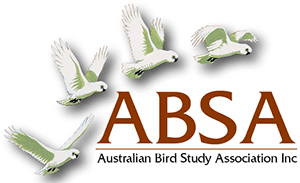FOOD SOURCES OF THE RAINBOW LORIKEET Trichoglossus haematodus DURING THE EARLY WET SEASON ON THE URBAN FRINGE OF DARWIN, NORTHERN AUSTRALIA
| Posted: |
03/06/2021 |
| Author(s): |
Donald C. Franklin, Makoto Hasebe |
The food sources of the Rainbow Lorikeet
Trichogossus haematodus were studied from October to January
in a mixed environment of urban, semi-urban and remnant native vegetation on the coastal fringe of Darwin in
the Northern Territory. The study coincided with a period of low nectar availability in the tropical savannas,
but abundant flowering and fruiting of rainforest trees and the ripening of cultivated fruit of Mango Mangifera
indica. Lorikeets obtained a diversity of food types from 37 species of plants. Consumption of seed, mostly of
the Coastal She-oak
Casuarina equisetifolia, and nectar and/or pollen from a diversity of species comprised
41 per cent and 40 per cent respectively of foraging observations. Lerp obtained from the leaves of cultivated
eucalypts was also prominent in the diet, whilst consumption of fleshy fruits was minor and consisted entirely
of consumption of mango early in the study period. Just over 50 per cent of flower-feeding records were at
eucalypts and over 60 per cent at myrtaceous trees. Food sources and flock sizes varied considerably over
time within the study period. The median size of feeding flocks was five, with a range from 1 to 30, the largest
flocks occurring in Mango trees and at the flowers of woodland trees, and the smallest at cultivated flower
and leaf sources. Coastal forest provided mainly seed and woodland trees mainly nectar and/or pollen, whilst
the urban environment provided a wide range of resources. However, an extensive band of semi-deciduous
vine-thicket provided few food sources and supported few lorikeets during the study period. The large population
of lorikeets in the study area was supported both by the diversity of plants associated in particular with urban
plantings, and by the juxtaposition of habitats.
>> Download Abstract |
File Size: 76 KB
>> Download Complete PDF | File Size: 1 MB
